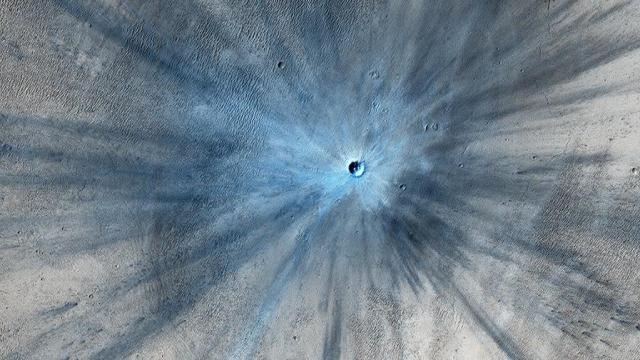It has been 15 years since NASA launched their Mars Reconnaissance Orbiter (MRO), and it continues to provide us with spectacular images of the Red Planet. To celebrate this anniversary, NASA has released a new batch of images from the MRO, including some of the most detailed shots we’ve seen so far. Here’s what we can not only see, but download for free.
How were these taken?
According to NASA, the MRO’s primary mission is to study the temperatures in Mars’ atmosphere, look underground using radar and detect minerals on the planet’s surface. Even though photography isn’t part of that, the spacecraft is probably best known for the incredible images it captures, which have largely shaped our current knowledge of what Mars looks like.
If you’re curious about the type of cameras you need to take images like this, here’s what’s onboard the MRO, per NASA:
The Mars Colour Imager (MARCI) has a fisheye lens that produces a daily global view. The Context Camera (CTX) provides 31 km-wide (30-kilometre-wide) black-and-white terrain shots. Those images, in turn, offer context for the tightly focused images provided by MRO’s third camera, the High-Resolution Imaging Science Experiment (HiRISE), which produces the most striking views.
Even though all the cameras are important, the HiRISE has kind of been the MVP of the MRO, capturing everything from tumbling avalanches and skyscraping dust devils, to other NASA spacecraft on Mars, like the Curiosity and Opportunity rovers. As of early August 2020, HiRISE alone had taken 6,882,204 images.
[referenced id=”937405″ url=”https://www.lifehacker.com.au/2020/08/how-to-view-the-perseid-meteor-shower-this-week/” thumb=”https://www.gizmodo.com.au/wp-content/uploads/sites/4/2020/08/11/hr1vdcxfxo6sykiz45rj-300×200.jpg” title=”How to View the Perseid Meteor Shower This Week” excerpt=”The annual Perseid Meteor Shower is peaking this week, so now is the time to plan your escape to a dark spot under open sky.”]
Why are some of the images blue?
First, a word about the colours in the images; specifically, why some are predominantly blue, instead of the signature reddish hue of the planet. In these images, “false colour” was added to highlight features like the tops of dunes and ripples to show how different aspects of the Mars landscape change over time (similar to what happens Earth, but without the impact of human residents).
“The more we look, the more we discover,” Leslie Tamppari, MRO’s deputy project scientist at the Jet Propulsion Laboratory said in a statement. “Before MRO, it wasn’t clear what on Mars really changed, if anything. We thought the atmosphere was so thin that there was almost no sand motion and most dune movement happened in the ancient past.”
How to see and download the images
The new batch of images can be found by clicking on this page of NASA’s website. That’ll bring up what looks like a blog post with images and then descriptions of them. To see any of the images up-close, or to download them, click on the image itself. You’ll then have the option of downloading it as a JPG or TIF, or as wallpaper.

Leave a Reply
You must be logged in to post a comment.